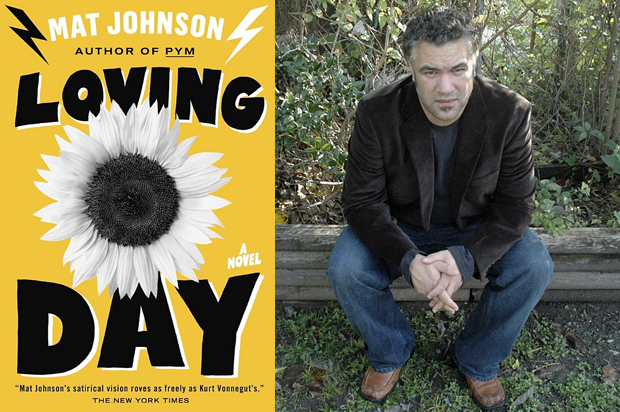 Occasionally, a white writer will turn to Mat Johnson, the novelist who created the much-praised “Pym” and “Hunting in Harlem,” with a manuscript and a plea to help avoid a racial blunder.
Occasionally, a white writer will turn to Mat Johnson, the novelist who created the much-praised “Pym” and “Hunting in Harlem,” with a manuscript and a plea to help avoid a racial blunder.
“My colleagues will say, ‘I have a black character, a maid, and I don’t want her to talk like a Harvard professor, but I don’t want her to sound like Stepin Fetchit either,’ ” Johnson told a packed audience in Seattle. “I’m both sympathetic and put off by these requests.”
Johnson, who runs the creative writing program at the University of Houston, described this predicament at the annual convention of the Association of Writers and Writing Programs. Randa Jarrar, the author of the novel “A Map of Home,” shared a similar experience:
“I just got an email two days ago from a friend who said, ‘I have a scene in my novel, coming out from a major publishing house, in which a couple of Arab women are sitting around a pool. Can they wear swimsuits?’ That’s wrong. That’s focusing on difference, and a writer shouldn’t do that.”
Jarrar and Johnson led a lively panel called “How Far, Imagination: Writing Characters of another Race in Fiction.” The speakers weren’t interested in the reductive, polarized debate – I’m free to write whatever I want vs. Ooooh, one should never transgress identity boundaries. Instead, the panelists steered the discussion toward nuance.
“I inhabit so many identities,” Jarrar said. “I’m Arab-American, Palestinian, queer, a single parent. I’m fat. If you know who you are, it works to improve writing characters in general.”
Panelist Susan Ito focused on the classic example from 1997: “Memoirs of a Geisha” by the white American writer Arthur Golden. Mineko Iwasaki, the Japanese woman interviewed for the book, sued Golden, and the two parties eventually settled out of court. “Did that book succeed or fail?” Ito asked. “Commercially, it was spectacularly successful. And I still know people who say it is their favorite book. If we are asking about writing across race, we need to ask what is success, and by what measure?”
Fiction writer Patricia Engel said her own work improves exponentially with research: “Relying strictly on my imagination, that writing was flat and aimless.” She suggested that aspiring writers try, as an exercise, to write a character outside their own experience, do the research and show themselves, too, in the work.
Johnson declared he would steal that idea. “What people think of as political concerns in fiction are actually artistic concerns: how to make a character a full and living human being.”
But good intentions can crater fast. In Johnson’s first workshop earning an MFA at Columbia University, he remembered that “a white woman wrote a black character and the workshop ended with the writer in tears and the black students furious.”
Now a professor, Johnson stressed that he wants to be the first to encourage students to examine their motives. “It’s particularly difficult for a white writer to write black, Latino, Asian characters. There are centuries of manipulating the images of people of color. White writers have to deal with that – have to ask how they are negotiating the history of stereotypes.”
The panelist agreed that a good place to start is the 1992 documentary “Color Adjustment” by filmmaker Marlon Riggs. It looks at race through the lens of prime time.

